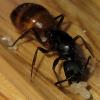1. Location - Collected from the San Gabriel Mountain Range
2. Date - Late April (unsure as to which collection date it was from)
3. Habitat - Shrubland/chaparral
4. Length - 5mm
5. Color, hue, pattern, texture - Medium/dark brown, mandibles and anterior portion of malar area orangish, appendages and antennae slightly lighter in color.
6. Distinguishing characteristics - Abundant pubescents over entire body
7. Anything else distinctive - colony only observed to be active midday; nest entrances plugged with soil during the p.m. twilight, a.m. twilight, and during the middle of the night
8. Nest description - miniscule tumulus if any present. (observed for multiple colonies)
Preface/acknowledgement of key validity and flaws:
I do acknowledge that the publicly available Myrmecocystus keys, mainly the Endiodioctes key, do have flaws and don't include all known species or variants. With that being said, there is only one publicly known variant in the Eremnocystus subgenus in California which happens to be M. sp. cf yuma (species profile here). M. sp. cf yuma appears as M. yuma, but with an abundance of pubescents present on the face. With that being said, it still keys to M. yuma with no flaw using the key that will be used on this post (key). Now with that acknowledgement out of the way I will proceed with going through the provided key.
1
- Antennal scape and dorsum of propodeum without fully erect hairs . . . . . 2
- Antennal scape, usually, and dorsum of propodeum, always, with some fully erect hairs (propodeal hairs may be short and inconspicuous in Myrmecocystus perimeces; this species has an unusually elongate head, CI 70-81) . . . . . 3
As seen in the below photo, there is erect hairs present on the dorsum of propodeum which negates going to couplet 2.
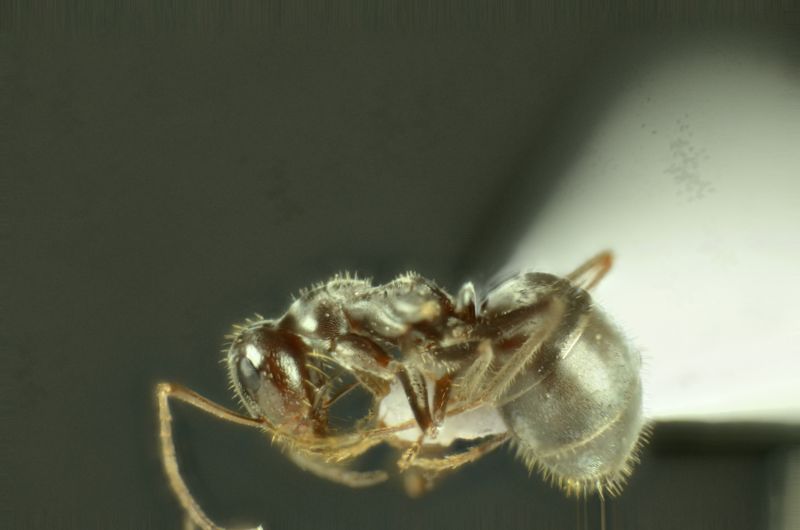
3
return to couplet #1
- Scape and/or tibiae, usually both, with conspicuous fully erect hairs; or, head moderately broad, CI 89 or more . . . . . 4
- Scape and tibia without erect hairs and head unusually elongate, CI 70-81 . . . . . Myrmecocystus perimeces
In reference to the photo below, there is conspicuous fully erect hairs on the tibia, this moves it to couplet 4 and negates M. perimeces
4
return to couplet #3
- Scape with conspicuous erect or semierect hairs; femora and tibiae with abundant erect hairs, some present on dorsal femoral surfaces; petiolar scale variable, but often compressed with summit distinctly notched . . . . . 5
- Scape with no erect hairs, except at apex; femora and tibiae with few erect hairs, none on dorsal femoral surface; petiolar scale thick in profile, crest flat or slightly convex . . . . . Myrmecocystus yuma
In reference to the same photo below, the femora and tibiae have abundant erect hairs; unfortunately I cannot get clear photos of the scapes, but when viewed under a stereo scope there is erect hairs. This moves it to couplet 5 and negates M. yuma.
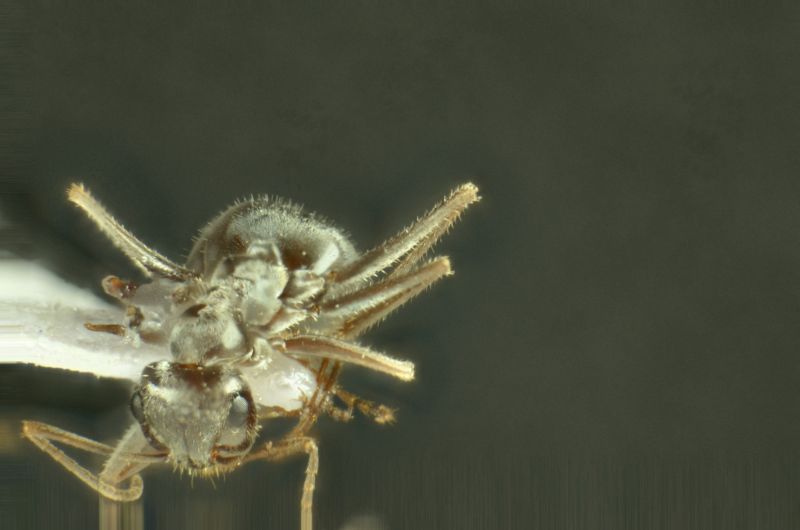
5
return to couplet #4
- Scape with scattered erect and numerous suberect to subdecumbent hairs; malar area with fewer than 6 erect hairs in frontal view; if more, pubescence of second tergum much less dense than that of first . . . . . 6
- Scape with numerous fully erect hairs; malar area with 10+ erect hairs in frontal view and second tergum fully as densely pubescent as first . . . . . Myrmecocystus hammettensis
Again, I am not able to get clear pictures of the scapes, but when viewed under a stereo scope there is scattered erect hairs and numerous suberect to subdecumbent hairs. What is clear in the below picture is that the malar area has fewer than 6 erect hairs in frontal view. This now moves to couplet six and negates M. hammettensis.
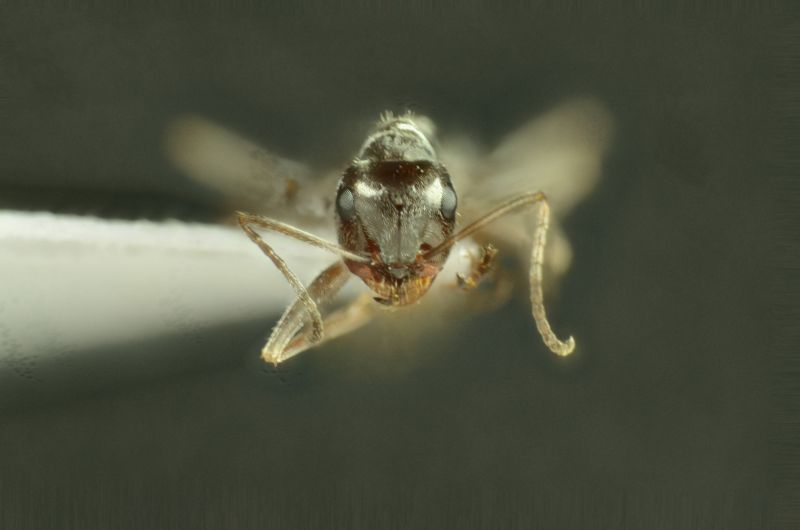
6
return to couplet #5
- Pubescence of second tergum as dense as that of first . . . . . 7
- Pubescence of second tergum much sparser than that of first . . . . . Myrmecocystus arenarius
In reference to the below picture, it is clear that the pubescents of the second tergum is as dense as that of the first, negating the option of M. arenarius (locality also negates M. arenarius, M. arenarius being a Nevada endemic) and moving this to couplet 7.
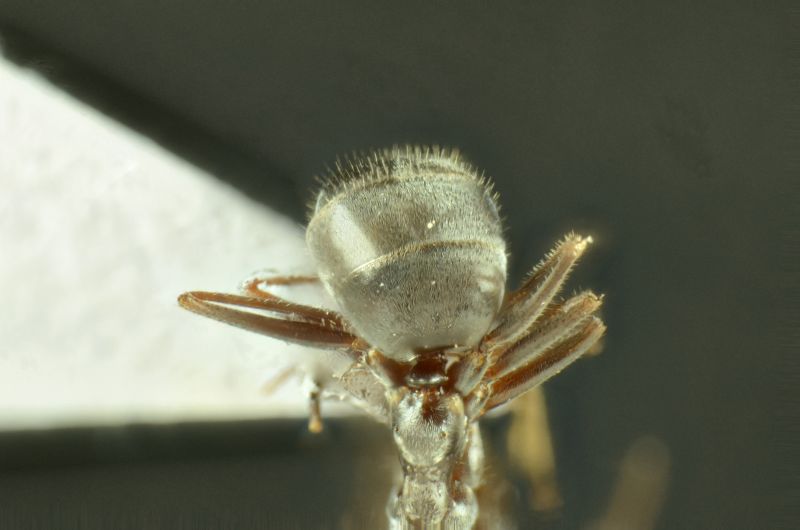
7
return to couplet #6
- Appressed pubescence abundant on frons and third tergum; petiolar scale thick, at level of spiracle distinctly more than twice the length of the spiracle, crest flat or convex . . . . . Myrmecocystus colei
- Appressed pubescence sparse on frons and third tergum; petiolar scale thin, at spiracle less than twice the length of spiracle, crest conspicuously notched . . . . . Myrmecocystus tenuinodis
In reference to the below photo, there is abundant appressed pubescents on the third tergum and in the picture referenced for couplet 5 there is abundant appressed pubescents on the frons. Furthermore, when viewing the photo referenced in couplet 3 and 4 the petiolar scale crest is flat and not conspicuously notched. This negates the option of M. tenuinodis leaving M. colei as the species.
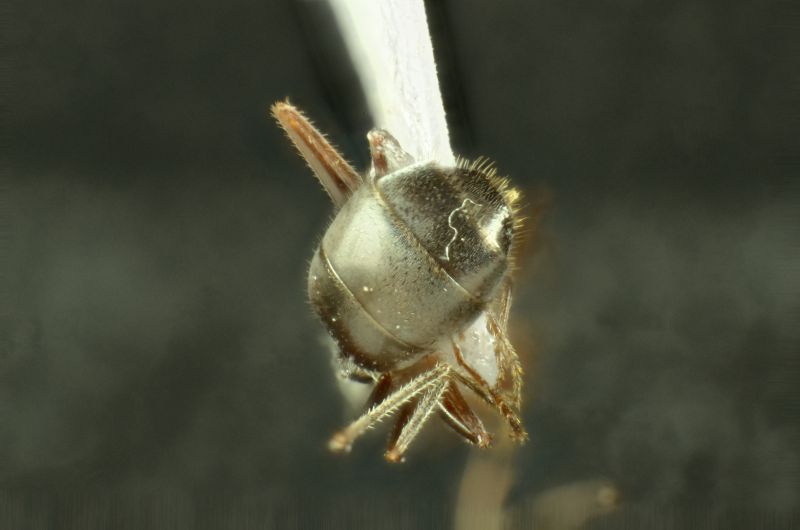
Extra photos.
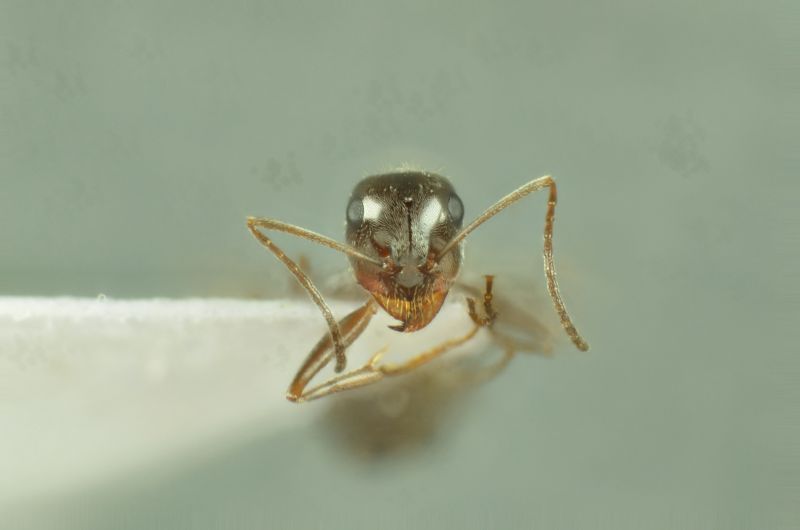
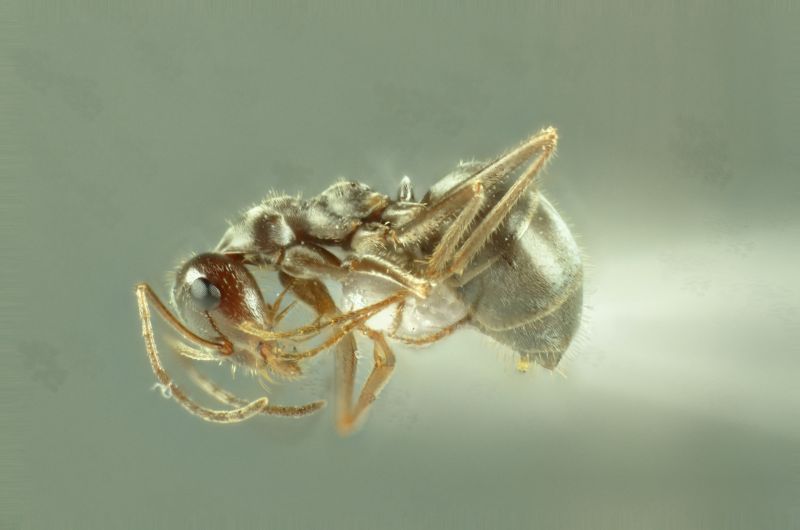
Edited by ReignofRage, January 30 2023 - 7:52 PM.
















